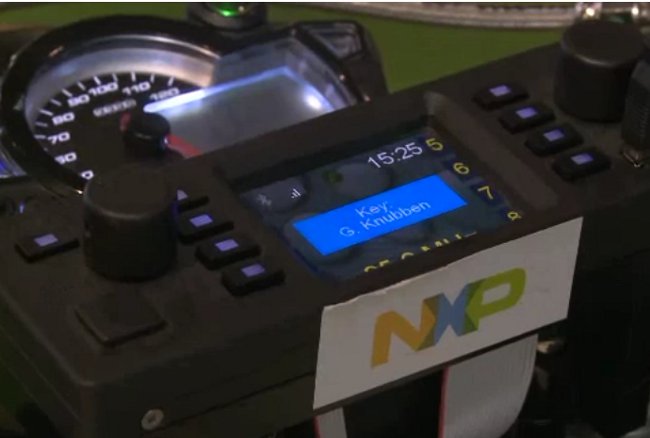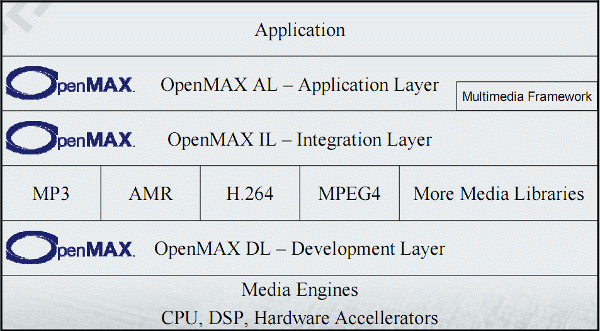After Android 4.0 source code release, it’s a good week for open source, as Amazon has also opened Kindle Fire source code as it had to comply with Android Open Source Project (AOSP) license has some point. Source code for other Kindle products is also available. The source code for the Kindle Fire is tarred in a file named Kindle_src_6.2_11185402.tar.gz which is quite a large download (809 MB). The file contains 4 directories with the source code for the Linux kernel (2.6.35), a modified version of Android 2.2, the bootloader (u-boot) and x-loader, first-level bootloader for OMAP SoC. I’m not sure many people will work on this version, as Android 4.0 source code for OMAP4 (The processor used in Kindle Fire) is available and has been ported to Galaxy Nexus and TI OMAP4 low cost development board (Pandaboard). So we could see Android 4.0 (ICS) running on Kindle Fire in […]
Beyond NFC Payment: Other NFC Use Cases
During CarteS event, NXP has uploaded a video on YouTube showing several NFC applications that are not directly used for payment. In the video below, you’ll see several such applications including: Smart Advertizement: shopping advice, movie promotion, travel info and game Smart Meter for meter reading and real-time power consumption monitoring via an Android device e-Passport with NFC Technology for faster immigration procedure. Secure Online Authentication NFC-Enable motorcycle to prevent theft NFC-enabled figurines to interact with video games. Authentication to unlock door, laptop and more. Gesture enabled smart card where you can use gesture to sign your own card and enable/disable it. Jean-Luc Aufranc (CNXSoft)Jean-Luc started CNX Software in 2010 as a part-time endeavor, before quitting his job as a software engineering manager, and starting to write daily news, and reviews full time later in 2011. www.cnx-software.com
Renesas Announces R-Mobile A1 Application Processors
Renesas has unveiled R-Mobile A1 series of application processor for personal navigation device (PND) and other portable devices. Here’s an excerpt of the press release: Renesas Electronics Corporation, a premier provider of advanced semiconductor solutions, and its subsidiary, Renesas Mobile Corporation, an innovative supplier of advanced cellular semiconductor solutions and platforms, today announced the R-Mobile A1 series of application processor for PND (personal navigation device) and other portable devices. The R-Mobile A1 series of devices integrate Renesas’ SH-Mobile R series and EMMA Mobile™ series, which have proven track records as application processors for PND and portable media players … Although equipment that includes ISDB-T one-segment broadcast reception functionality has become mainstream in portable equipment such as PNDs and portable media players, there are now increasing needs for higher image quality and higher functionality due to the widespread adoption of ISDB-T full-segment terrestrial digital TV broadcasting. Furthermore, there are increasing demands […]
Android 4.0 Source Code is Now Available
Google has just released Android 4.0.1 source code in AOSP. There are 3 main branches: android-4.0.1_r1: the release branch, ITL41D, that is expected to ship on Galaxy Nexus. That’s the one you want to be using to port to devices. ics-mr0: ICS development branch. It contains a few changes that aren’t in the release branch, so it might not be as stable. That’s the one you want to use if you plan to contribute to CTS. master: usual master branch, it contains all of ics-mr0 plus a few extra changes. That’s the branch that you should use if you want to contribute to the platform. The release and development branch require the “classic” host configurations (Ubuntu 10.04, or MacOS 10.6 with XCode 3). The master branch had a few tweaks to make it work better on newer systems (Ubuntu 11.10, Mac OS 10.7 with XCode 4.2) but it’s not 100% […]
Android NDK Revision 7 for Android 4.0 (ICS)
Google has just released Android Native Development Kit Revision 7, the Android SDK that allows developers to reuse C/C++ code. This version adds new native APIs available in Android 4.0. Here’s the changelog of the most important new features and bug fixes: NDK APIs for Android 4.0 (API level 14): Low-level streaming multimedia: A new API based on Khronos OpenMAX AL 1.0.1 provides a direct, efficient path for low-level streaming multimedia. The new path is ideal for applications that need to maintain complete control over media data before passing it to the platform for presentation. Audio decoding into PCM: Extensions to the existing native audio API based on Khronos OpenSL ES let native apps decode compressed audio assets to PCM format. CCache support to allow faster rebuilds. Added support for setting APP_ABI to all to indicate that you want to build your NDK modules for all the ABIs supported by […]
11 Recommendations for Optimizing Mobile Apps Power Efficiency
Following an AT&T Labs Research and corresponding paper entitled “Profiling Resource Usage for Mobile Applications: A Cross-layer Approach“, AT&T found that a few simple design approaches could significantly improve mobile application responsiveness and reduce battery drain by lowering your application power consumption. They analyzed PANDORA internet radio and discovered that the streaming music was delivered efficiently, but periodic audience measurements were draining battery life. Here is an excerpt of the PANDORA Case Study: While the music itself was sent simply and efficiently as a single file, the periodic audience measurements—each constituting only 2KBs or so—were being transmitted at regular 62.5-second intervals. The constant cycle of ramping up to full power (2 seconds to ramp up, 1 second to download 2KB) and back to idle (17 seconds for the two tail times, the first down from full-power mode and the second down from half-power mode) was extremely wasteful. Of the total […]
OpenMAX (Open Media Acceleration)
OpenMAX (Open Media Acceleration) is a royalty-free, cross-platform set of C-language programming interfaces that provides abstractions for routines especially useful for audio, video, and still images. OpenMAX standard is managed by the non-profit technology consortium Khronos Group. OpenMAX allows developers to take advantages of hardware media decoding/encoding. For example, If you want to play video using Raspberry Pi hardware (VideoCore IV GPU in Broadcom BCM2835) you’ll have to use OpenMAX IL. OpenMAX provides three layers of interfaces: Application Layer (AL): Open standard for accelerating the capture, and presentation of audio, video, and images in multimedia applications on embedded and mobile devices. Integration Layer (IL) : API defining a standardized media component interface to enable developers and platform providers to integrate and communicate with multimedia codecs implemented in hardware or software. Development Layer (DL): APIs containing a comprehensive set of audio, video and imaging functions that can be implemented and optimized […]
Linaro’s Android Platform – ELCE 2011
Zach Pfeffer, Linaro Android Platform team leader, describes Linaro’s work on the Android platform and future plans at Embedded Linux Conference Europe 2011. Abstract: Linaro uses components from the Android Open Source Project, member companies, community supported efforts and Linaro engineering teams to build integrated, easy-to-use and well tested Android platforms for upstream work, product baselines and hobby projects. The team currently has platforms for TIs PandaBoard, BeagleBoard and Beagle xM, ST Ericsson’s Snowball, Samsung’s Origen and Freescale’s iMX53. They recently released platforms with Android 2.3.4 built against GCC 4.6 and running the 3.0 Linux kernel. In this session Zach reviews what’s been done, the Linaro Android concept, how Linaro brings Android together and what their plans are. Jean-Luc Aufranc (CNXSoft)Jean-Luc started CNX Software in 2010 as a part-time endeavor, before quitting his job as a software engineering manager, and starting to write daily news, and reviews full time later […]






